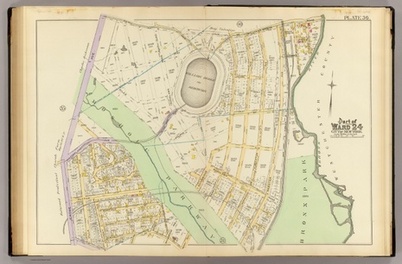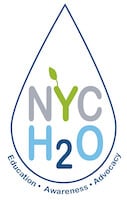Sunday June 9
Williamsbridge Oval, E. Gunhill Road
Route

Did you know that the Bronx River Is NYC’s only true fresh water river? It was considered a source for NYC’s drinking water in the early 1830’s. By the end of the 1800’s it was labeled “an open sewer.” The river has made a comeback since the days of reckless dumping and now supports many forms of aquatic life like Alewife Herring and even a beaver named “Jose.”
Come be awed by its beauty and bike with NYC H2O and the Bronx River Alliance as we tour the Bronx River from Williamsbridge Oval to its source in Valhalla.
bronx river bike slides by api-70838561
Notes
WW Niles was a lawyer and conservationist and wrote the legislation and lobbied to get the Bronx Parkway Commission passed 1906 designated but didn’t start construction until 1917. It opened in 1925.
In 1881, Niles helped to found the New York Park Association. Presenting comparative studies of parkland in foreign cities, predictions of rapid population growth in New York, and rising land values, the Association called for more land for parks in the southern Bronx, which had been annexed by New York City in 1874. This effort culminated in the 1884 New Parks Act and the city’s 1888-90 purchase of lands for Van Cortlandt, Claremont, Crotona, Bronx, St. Mary’s, and Pelham Bay Parks and the Mosholu, Pelham, and Crotona Parkways. The new properties increased the city’s parkland fivefold, from about 1000 acres to about 5000 acres.
Niles joined the New York Bar in 1885, established the firm of Niles & Johnson in 1891, and was elected to the New York State Assembly in 1895. In 1900, he served as counsel to subcommittee on borough government of the New York City Charter-Revision Commission. He was also a member of several civic and social organizations. Niles served as president of the Bronx Society of Arts and Sciences and the Bronx Board of Trade, vice-president of the Citizens Union and the Tree Planting Association, and a member of the City Planning Commission. He married Florence M. Brown in 1912, and they had three children named Charlotte, Roma, and William.
Niles continued to strive for the development of Bronx parkland along the Bronx River. The 23-mile river had been greatly contaminated, and Niles was one of many that called for a solution to protect the quality of Bronx Park. The Bronx River Sewer Commission was established in 1905 and the Bronx River Parkway Commission was created in 1906 to reduce the sewage and beautify the edge of the river. Niles, a Bronx resident, served as the vice-president of the Bronx River Parkway Commission from 1907 to 1925. The commission sought the acquisition of land along the river, and the long process was hailed as a success when the Bronx River Parkway opened in 1925. Niles became head of the Taconic State Park Commission in 1927. He died in Riverdale-on-Hudson on January 12, 1935.”
As a result of the large population growth during the last quarter of the nineteenth century in the northern part of the Bronx and the southern part of Westchester, the Bronx
River had become terribly polluted. Residential sewers in White Plains, Tuckahoe, Bronxville, Mount Vernon, Woodlawn, and Williamsbridge fed directly into the river. What
sewage systems did exist merely dumped their collected “product” into the stream. Cesspools, privies, and refuse from barnyards and stables proved as much of a problem as sewage drains. Tanneries in White Plains and Bronxville, the bleachery (textile) at Bronxville, the Haubold Powder Mill (gun powder/black powder) in Hartsdale and other factories along the river’s banks deposited a potent brew of metallic and chemical pollutants directly into the stream. Even where industries did not directly pollute, their contaminants leached their way into the river through ground water. Oil, gas, and tar run-off from the property of the Westchester Lighting Company in White Plains and from its gashouse in Yonkers also polluted the water.
Niles observed that in the United States: ” From the earliest times it has seemed as though every man’s hand was against the river. Although, when our fathers first came over, our rivers were teeming with fish and it would seem as though the desire to protect such a valuable and cheap source of food supply would have furnished a strong motive for their protection, no such inclination is anywhere apparent but from the earliest times whenever a community grew up alongside a river the work of spoliation immediately commenced. The first misuse was the dumping of garbage and other refuse material into the river, then as drainage was undertaken the addition of the community’s sewage to the stream, then with the advent of manufactories, the location of the most unattractive utilities along the banks and the drainage of tannin, sludge and acid and other chemicals into the river. This practice has continued to the present day with the result that our rivers are almost devoid of fish and wherever a city has grown up the river banks present so distressing a sight that no one ever thinks of erecting a residence on the shore of the stream or, indeed, any other structure than a factory or a coal yard.”
The Bronx Valley Sewer Commission’s 1896 report detailed the situation along the river, noting that “all kinds of sewage refuse and factory waste” were dumped into the river. “Barnyards, privies, cesspools, gas-house refuse, the watery part of White Plains’ sewage disposal works, drains from houses,” continued the report, added “unsanitary and foul-smelling contributions.” The commission’s public hearings confirmed that the Bronx River had become an open sewer.
The Commission evaluated several options for solving the pollution problems, including covering the river and directing all sewage into it. This solution was both expensive and impractical as the river lacked the necessary water volume to keep the sewage moving during the dry season. Enclosing the river in this fashion would also cause problems in periods of high water, since it would not be able to accommodate the water volume generated by heavy rains and spring floods. Another proposed solution was to build a single sewage disposal plant or a series of disposal works along the river, but this was deemed too expensive. Engineers instead recommended that a sewer be constructed along the river and that the Bronx River be deepened and straightened to improve drainage and control flooding.
The Bronx Valley Sewer Commission acknowledged that there was already a dirt track known as the “pipeline road” through most of the distance of the valley and that this driveway could be made continuous if desired.
It took until 1905 to do anything but finally WWNiles came on the scene and wrote legislation and lobbied to establish the Bronx River Parkway Reservation. It was primarily conceived as a pollution-control project to relieve the severe contamination of the Bronx River. Like most urban streams of the era, the Bronx River served as an open sewer and public dumping ground. According to parkway promoters, numerous factories, housing developments, small farms, and businesses located between the Bronx and White Plains were using the river as “promiscuous dumping grounds for refuse of all kinds.”
The primary goal of the Bronx River Parkway was to clean up the river. The road was secondary and was designed as a leisure road. WW Niles;
” When I first conceived the idea of the Bronx River Parkway, it was not with the thought of building a park driveway but with the purpose of protecting a beautiful little stream, running through a lovely valley, from destruction. The defilement had progressed to such a point that in five years more the river would have been an open sewer creating a forbidding no-man’s-land through what is now one of the most beautifully developed suburbs of any city and practically ruining one of the finest city parks…Sewage was discharged into the river wherever sewers were constructed, refuse and garbage were dumped into the river together with rubbish, such as worn out automobile tires, discarded boilers, barrel hoops, everything in fact. The acquisition of the river bed and adjoining uplands by the parkway commission stopped all these abuses, the river was cleared of rubbish, the discharge of sewage gradually stopped and the river restored to its original condition. The resulting improvement has been almost unbelievable. A high class of residence building immediately commenced and has continued without intermission.”
America’s first public parkway designed explicitly for automobile use. Gilmore Clarke was the landscape designer. It became the model for other parkway’s like the Taconic State Parkway which is basically an extension of the Bronx River Parkway (Niles was the chairman of the Taconic Commission that built the Taconic State Parkway), the Pallisades in NJ and the Blue Ridge Parkway in VA
Botanic Garden
On April 18, 1891, the land was set aside by the New York State Legislature for the creation of “a public botanic garden of the highest class” for the City of New York. Prominent civic leaders and financiers, including Andrew Carnegie, Cornelius Vanderbilt, and J. Pierpont Morgan, agreed to match the City’s commitment to finance the buildings and improvements, initiating a public-private partnership that continues today. In 1896 The New York Botanical Garden appointed Nathaniel Lord Britton its first director.
Bronx Zoo
In 1898, the City of New York allotted 250 acres of Bronx Park to the New York Zoological Society to build a park aimed at preserving native animals and promoting zoology. The Bronx Zoo opened in 1899 and remains one of the largest wildlife conservation parks in the United States, housing 4,000 animals representing more than 650 species. Andrew Carnegie was the Director.
References
1. http://westchesterarchives.com/BRPR/Report_fr.html
2. http://www.bronx-river.com/docs/brprc-History-short.pdf
3. http://www.aapra.org/Pugsley/NilesWilliam.html
4. NYC Parks website
5. Edward Wegmann’s 1896 ‘The Water Supply of the City of New York 1658 -1895‘ page 92
6. Map and audio tour of Bronx River
7. Report of the Bronx Parkway Commission 1918




